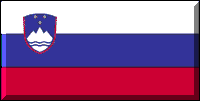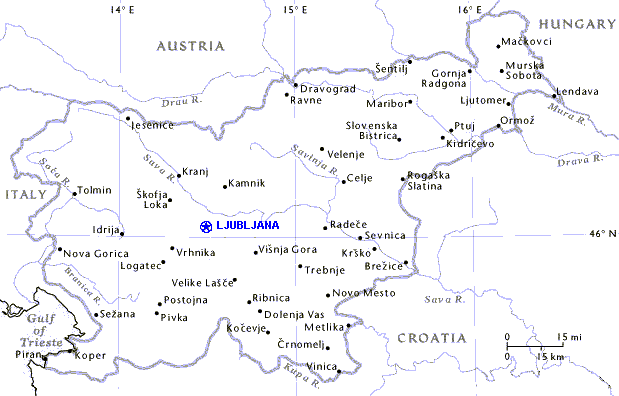 Graced by the Julian Alps in its northwestern region,
this nation consists mainly of Roman Catholic Slovenes, a tenacious people
who have preserved their culture and language despite centuries of Germanic
rule. The Slovenes settled in their lands 1,400 years ago and were
administered by the Austrians from the 13th to the early 20th century,
except for a short period under French control at the start of the 1800s. In
1918 Slovenia joined the Kingdom of Serbs, Croats, and Slovenes-subsequently
named Yugoslavia. Partitioned between Germany and Italy during World War II,
Slovenia returned to Yugoslavia in 1945. Graced by the Julian Alps in its northwestern region,
this nation consists mainly of Roman Catholic Slovenes, a tenacious people
who have preserved their culture and language despite centuries of Germanic
rule. The Slovenes settled in their lands 1,400 years ago and were
administered by the Austrians from the 13th to the early 20th century,
except for a short period under French control at the start of the 1800s. In
1918 Slovenia joined the Kingdom of Serbs, Croats, and Slovenes-subsequently
named Yugoslavia. Partitioned between Germany and Italy during World War II,
Slovenia returned to Yugoslavia in 1945.
Slovenia proclaimed its independence in June 1991,
prompting a ten-day conflict that brought defeat to the Yugoslav Army. The
nation suffered a recession during the early to mid-1990s, but this most
prosperous of the former Yugoslav republics has the highest standard of
living now in post-communist central and eastern Europe. |

|
